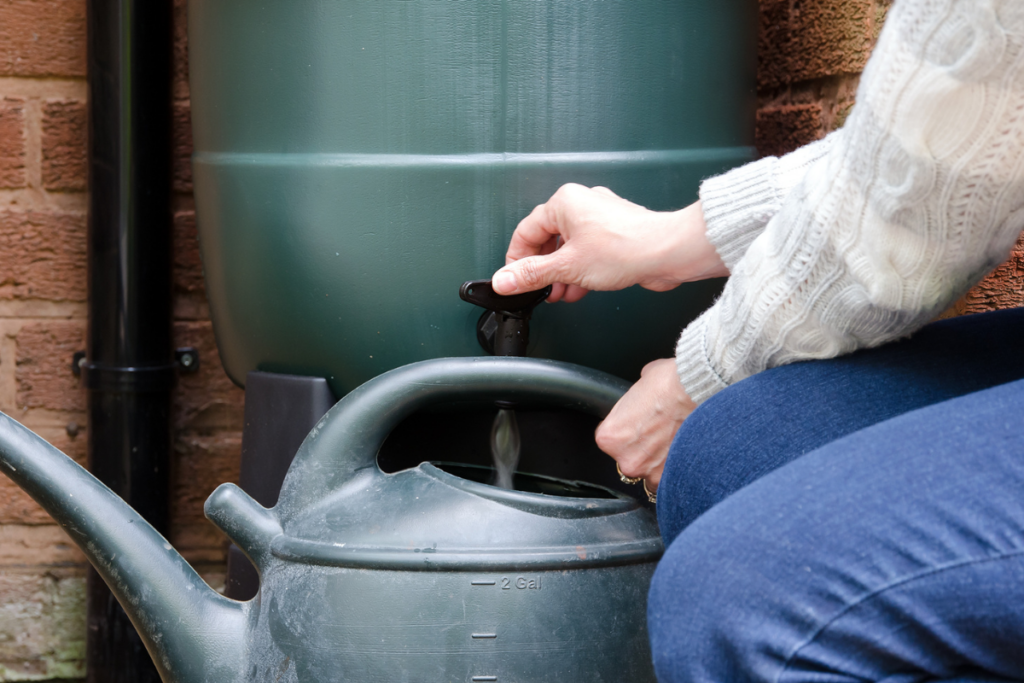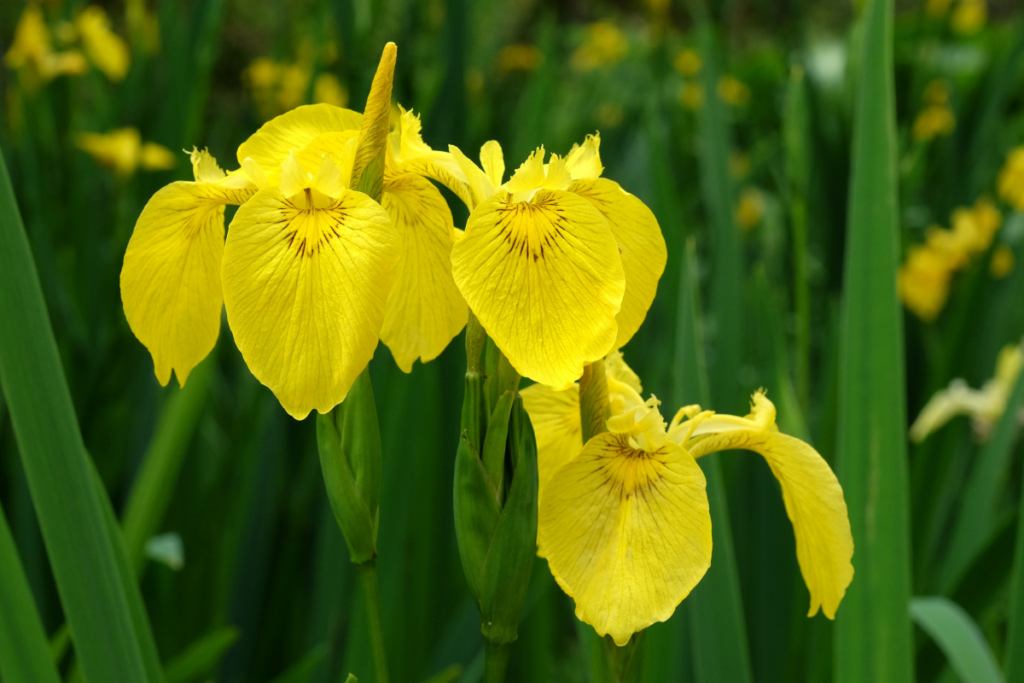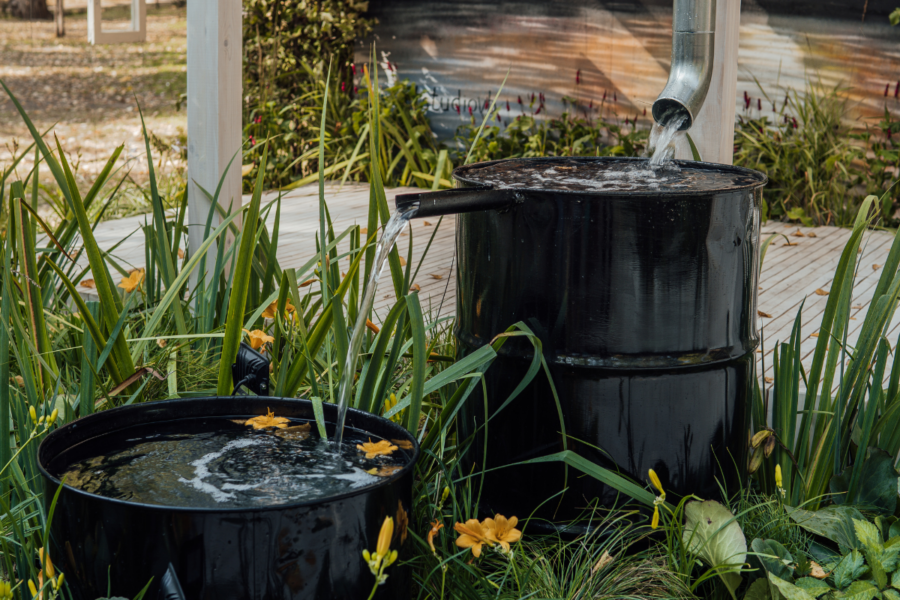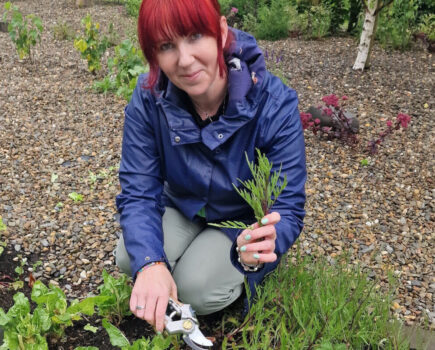Kim Stoddart talks rain gardens, resilient plants and some of the really cool ideas from RHS Chelsea Flower Show
I can remember, almost a decade ago, interviewing many of the RHS Chelsea flower show garden designers for the Guardian newspaper. I used to like walking around the showground on the Sunday before it opened, as the designers prepared their work for judging, and seeing the gardens quietly at a gentler pace.
It’s fascinating to see the behind-the-scenes final primp and polishing stage, the relative calm before the excitable storm of press day and the flurry of the crowds that descend during the following week. I remember one year trying to see which non-traditional, or slightly naughty gardening practices the designers would reveal they secretly employed at home when no one was looking. Less controlled time- or money-saving hacks, weed growing or rule-breaking practices and the like as a stark but refreshing contrast to the grand show that has long been RHS Chelsea Flower Show.
I got some interesting snippets, some designers were a little taken-aback at my questioning, while the likes of Adam Frost, Dan Pearson and Alan Gardener generously offered good-spirited and useful ideas.
Our lovely magazine has previously been more than a little sceptical of the display in years gone by, arguing how little it offered for ‘real’ people and gardening on the ground. Times are changing and the 2023 show featured weeds and wildlife, while this year has a focus on sustainability, money-saving and wellbeing for all. In my view, there is much to admire and learn from this year, to take onwards into a more sustainable, forward-thinking future.
Rain gardens

As regular readers of my writing will be aware, I’ve had frontline experiences with water. My gardens flooded, and were under water, for a good few weeks nearly a decade ago. In more recent years my private water supply (a well) has run so dry in the summer there has been no water at all at times coming out the household taps. As a result there are many defences I have employed to conserve and contain water throughout the year.
From slowing, spreading and sinking an excess of rain out of harm’s way with swales, berms and rills, to allowing wild plants like rushes to grow between trees in an area that was previously prone to winter flood, there is a lot you can do easily and effectively to help slow the flow and build resilience in a relatively low-cost way.
Some of the highlights when it comes to water resilience at RHS Chelsea Flower Show this year include the Water Aid Garden, which features a rainwater harvesting pavilion, the National Autistic Society Garden with its waterfall roof which feeds into a swale, and the Water Saving Garden with rain water harvesting displays by Affinity Water. There is also a Flood Resilient Garden which features a swale, pond and soak away.




Rain water harvesting
In a sustainable gardening system, when a material is in ample supply, you collect and use it wisely. In the case of rain, there has been a lot to spare over the months previous. A supply of harvested rain water is incredibly important during the summer months when the ground is dry, yet collecting this resource can also help slow the flow (and protect against a build up of water), in areas prone to mild flooding.
There are many fancy water storage options available nowadays for every size and space, yet even the use of everyday collection containers like basins placed outside can help. Thrifty water harvesting vessels can be sourced within your local community and it is fun to get creative and see what you can find for free. The obvious but important caveat is to be careful to check what your salvaged water butt held previously, as you don’t want to work with something that might pollute your precious water supply before you’ve used it. From old industrial food supply containers thoroughly washed out, to water tank barrels and bins, work with what you can find to maximise opportunities.

Don’t forget to cover your waterbutts to avoid the build up of twigs and leaves which can otherwise clog (and damage) hose pipes, taps and watering cans. I do like to leave at least one storage unit uncovered because the birds love splashing around having a bath given the opportunity, which is a delight to see.
You can divert water with the use of channels or rills which can be backfilled with gravel to make an attractive design feature. Why not lead water into a dipping pond, or wet area, so that further rainwater can be stored for use during the summer months, making an attractive wildlife-friendly feature in the interim?
FACT – You’ll be perhaps amazed at how much rainwater can be harvested from a relatively small roof space, even a shed. For example one 93 sq m roof (1,000 square -foot) would yield 600 gallons of water from just one inch of rain.

More resilient plants for wet areas
Some recommendation from the RHS Chelsea Flower Show Gardens this year
The Flood Resilient Garden features a range of ferns which can also thrive in areas which are damp and shady, helping to boost soil structure and afford protection. The garden also includes Pollarded willows, which are happy growing in moist ground. I use both of these in my gardens in the areas prone to flooding and they work well.
The WaterAid Garden features a range of interesting plants for different water-challenged areas includedAlnus glutinosa Alder tree which can survive submerged in water as its wood hardens.
Various varieties of iris feature across many of the gardens. It’s not surprising as they are a very resilient, pretty, extremely low-maintenance plant which can dutifully return year on year out in a variety of habitats with minimal effort, such as the Laevigatae or water iris for wetter areas.


Find more tips, advice and articles like this at the Amateur Gardening website. Subscribe to Amateur Gardening magazine now.





